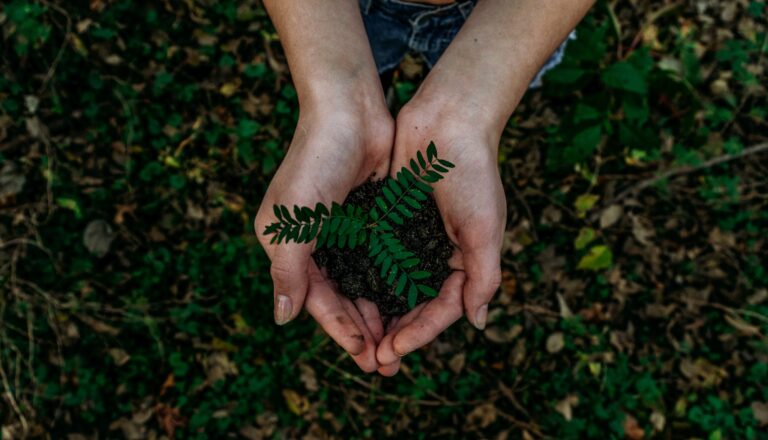Footprints in Nature, Packaging with Purpose: A Dual Commitment to Sustainability

As customers and investors become increasingly concerned about the environment, adopting sustainable packaging solutions has become a necessity for businesses. This is packaging that reduces environmental footprint by using recycled materials, shortening the production process, and extending the lifecycle through reusability and recycling.
The effects of global warming are evident in our lives today. Increased gas emissions into the air from different human activities is the major culprit of this devastating situation. By joining the combined efforts of every stakeholder in reducing the carbon footprint through sustainable packaging, businesses can stamp their contribution to alleviating the negative effects of climate change..
The Environmental Impact of Traditional Packaging
According to UNEP, an equivalent of 2,000 garbage tracks full of plastic find their way into the aquatic ecosystems every day. This translates to an average of between 19 to 23 million of plastic every year. And with plastic packaging making up about 36% of total plastic production, it is clear that shifting to eco-friendly alternatives can provide relief from the luring danger of plastic pollution.
While traditional packaging offers a cheaper packaging solution for businesses, the above-illustrated negative environmental impact can’t just be ignored if we are to achieve a healthier world. Businesses must shift from unsustainable packaging materials that contribute a huge portion of an organization’s footprint. These materials include:
- Multi-Layered plastic – This is a combination of plastic, paper, and aluminum that are difficult to separate, making recycling even harder
- Polystyrene – Also known as Styrofoam, which is made from plastic foam and is non-recyclable in nature
- Low-density polyethylene (LDPE) – This has strong and tight-knit polymers that take longer to decompose
- Aluminum foil – Foils contain bauxite that requires mining from the earth’s surface. Aluminum foil is also hard to recycle, ending up in landfills
Unsustainable packaging also refers to practices that lead to increased plastic waste, such as:
- Overpackaging – For instance, using individual plastic wraps or bulky packaging for products
- Excessive plastic use – Using more plastic than necessary in non-reusable packaging such as single-use and disposable plastic bags/containers
Innovations in Sustainable Packaging Materials
Thankfully, innovations towards sustainable packaging materials are taking shape with the introduction of biodegradable alternatives to the market. These are materials that take a shorter time to break down to their natural state after disposal. They include plant-based plastics that are created from plant scraps or food waste, such as cornstarch mushrooms, seaweed, cellulose, and paper.
Benefits of adopting eco-friendly packaging
Besides creating a cleaner environment for a healthier life and a better ecosystem, adopting eco-friendly packaging comes with various benefits for your business. Here are a few of them:
Reduced operating costs
Biodegradable packaging translates to using fewer resources and cost-effective recycled materials, which reduces production costs. Moreover, the fact that these packaging can be reused reduces the need to produce more, minimizing the cost of acquiring new raw materials.
Improved brand reputation and image among eco-friendly customers and investors
This can translate to a cost-effective way of acquiring new business. Brand image can also be enhanced by utilizing custom packaging that is unique and engages the customer on a deeper level. Packaging professionals such as RXDco for custom cannabis packaging solutions come in handy in tailoring packaging that suits any business’s unique products.
Eco-Friendly Packaging Practices in the Industry
Consumer preference for sustainable shopping has grown significantly in the recent past. The consumer has driven the sustainability conversation, with Gen Z spearheading the movement. Today, two-thirds of consumers are willing to pay more for products that advocate sustainability. The main reasons for this push include saving the environment, reducing waste, empathy for wildlife, and social signaling.
Challenges and Opportunities in the Transition to Sustainable Packaging
Transitioning to sustainable packaging poses a huge opportunity for organizations to reduce their carbon footprint and save the environment. Businesses also have an opportunity to improve their brand image to appeal to consumers who are demanding green practices from businesses.
However, though businesses are focused on shifting to sustainable packaging to meet consumer preferences, some challenges impede these efforts. These challenges include:
- Cost – The cost of sustainable packaging is higher than the cost of traditional alternatives. Passing this cost to consumers can hinder a percentage of consumers from buying the products
- Durability – The biodegradable and recyclable nature of sustainable materials can compromise the durability of the packaging. This can easily lower the effectiveness of safeguarding products until they reach the consumer
- Regulations and standards – Organizations must conform to regulations and standards governing the manufacturing of green packaging, which can sometimes be rigorous
- Research and development – Inventing sustainable packaging materials requires extensive research, which can be costly in terms of time and money
Consumer Education and Engagement
The fight for sustainable practices can’t be complete without consumers’ contribution. Organizations can leverage consumer education to instill sustainability values in their consumers to turn them into advocates of change toward a sustainable world. Raising awareness of the importance of sustainability also equips consumers with the knowledge and skills required to make informed choices on sustainable consumption behaviors.
Strategies for Educating Consumers on Sustainable Choices
- Ensure transparency by highlighting sustainable attributes of products and ethical practices as well as sharing certifications
- Share educational materials in the form of blog posts, videos, and more highlighting the benefits of sustainability and dangers of non-sustainable choices
- Sensitize consumers on responsible purchasing by encouraging them to prioritize factors beyond aesthetics and price, such as reusability, durability, recyclability, and green production practices
- Promote eco-friendly alternatives and highlight the benefits that come with them
- Encourage sustainable buying by offering incentives
The Role of Social Media and Influencers in Promoting Eco-Friendly Packaging
Social media plays a vital role in educating consumers on sustainable choices. With billions of social media users today, businesses have an opportunity to reach a wider audience to promote their eco-friendly packaging. Social media allows organizations to create communities and gather a large following for their brands. By using testimonials and storytelling on social media, businesses can appeal to emotions as well as provide social proof to share the benefits of sustainable packaging.
In addition, businesses can use influencers to promote their eco-friendly packaging on social media. This allows brands to take advantage of the influencers’ huge following to get their message across to an audience that is already engaged. The trick is to opt for influencers who have already showcased their sustainability values on social media.
Conclusion
The use of non-reusable and non-recyclable materials, as well as excessive use of plastic in traditional packaging, is among the key culprits of plastic pollution experienced today in the world. Though the situation can’t be reversed in a day, taking steps towards sustainable practices such as eco-friendly packaging makes a huge difference in saving the ecosystem for future generations. Moreover, businesses can benefit from the enhanced brand image and reduced cost to skyrocket growth to newer heights.


